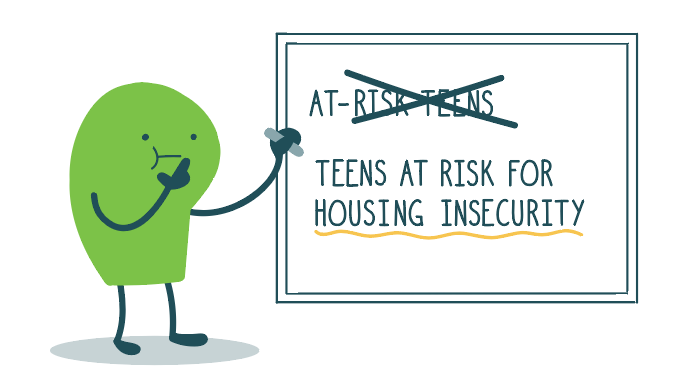
Here at We ❤️ Health Literacy Headquarters, we’ve been thinking a lot about insider public health phrases — the terms we use with each other to talk about our work. Recently, we’ve unpacked “vulnerable” and “hard to reach.” And this week, we’re taking a closer look at “at-risk.”
Public health professionals often use “at-risk” to describe people who are more likely to have poor health outcomes (think “at-risk youth” or “at-risk populations”). You may also be familiar with the term in, er, terms of education — people often use “at-risk students” to refer to those who are less likely to finish school.
Well, dear readers, we think it’s about time we phase out “at-risk” when used like that (you know, as an adjective). It’s a vague label that says nothing about what people are at risk for — and too often it shifts the focus away from systemic problems that cause people to be “at-risk” in the first place. Our solution? Be specific by naming the risk you’re talking about. Here are a couple examples:
- Let’s say you’re working on a gun violence prevention program for teenagers. Instead of referring to your priority (not target!) audience in a presentation as “at-risk teens,” be explicit: “teens who are at risk for experiencing gun violence.”
- Or you’re doing a needs assessment in a cluster of Black communities with especially high rates of COVID-19 cases. Instead of “at-risk communities,” say what you mean: “Black communities that are at risk for worse health outcomes from COVID-19.”
As we’ve discussed before, it’s also important to get to the root causes that increase the risk of disease and other poor health outcomes in certain groups — like institutional racism — whenever possible. So, sticking with the COVID example, you might say: “Black communities that are at risk for worse health outcomes from COVID-19 due to the effects of racism.”
And a final aside: if you’re writing for a consumer audience, it’s often best to ditch the jargon-y “at risk” for a more plain language alternative. “More likely to” is a good conversational option that often works (think “people who smoke are more likely to get lung cancer”).
The bottom line: Labeling people as “at-risk” is super vague, and it can even help perpetuate stigma. Instead, get specific and say what you really mean.
Post about it on X: Is it time to rethink how we use “at-risk”? @CommunicateHlth unpacks this common #PublicHealth term: https://bit.ly/2YrdcpI #HealthComm #HealthLiteracy
Browse recent posts